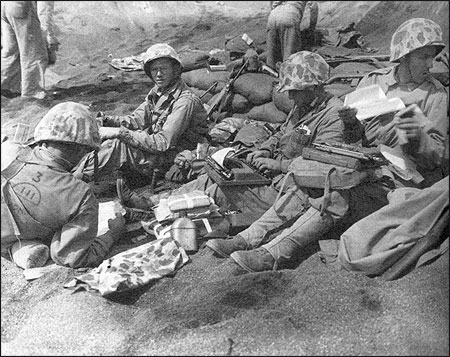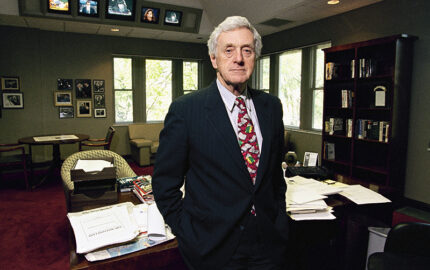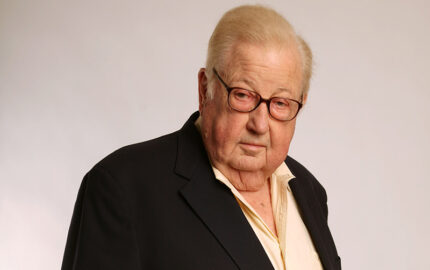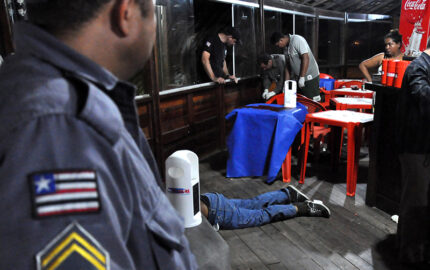
Men with bandoliers and Kalashnikovs led us up the mountain road. Their Toyota pickup truck jerked and shimmied. Grenades dangled as we rolled past caves, grazing sheep, bunkers, minefields and a guerrilla graveyard. So unfolded the high terrain of Ansar al-Islam, the extremist group of Kurds and Arabs that had been terrorizing northern Iraq.
Days earlier, on February 5, 2003, U.S. Secretary of State Colin Powell delivered the most important speech of his career to the United Nations. He urged war by claiming the Iraqi regime possessed weapons of mass destruction and had ties to Ansar and other militant groups. Powell showed an aerial photograph of a stone and cinder-block compound in the Ansar-controlled village of Sargat. He described the buildings as a “poison factory” capable of manufacturing dangerous chemicals that could be smuggled across the Middle East and Europe.
Ansar knew Powell’s assertions meant cruise missiles would be aimed at the group’s bases scattered in the wrinkle of these snowy mountains. The terrorist organization decided it was time for some P.R. of its own, so it invited a handful of international jour-nalists—those of us earlier considered persona non grata—to Sargat to inspect the cinder-block compound. We wondered if we should go. Was it a ploy? A religious leader who was close to Ansar informed us it would probably be safe. The potential news value was high, and we decided to take the chance.
This invitation, which came through the static of a satellite phone, made me realize again the importance and responsibility of foreign reporting. Powell’s allegations were made thousands of miles away in New York, and his charges were a part of a larger case being made by the Bush administration to justify an Iraqi invasion to the American people.
After the U.N. speech, 12 other Western journalists and I were standing with the bearded, Koran-quoting guerrillas whom the United States was preparing to annihilate. We had the opportunity to report and observe and thereby offer an independent assessment of the evidence. The Bush administration probably never believed that Ansar, with its links to al-Qaeda, would allow reporters into its domain. Yet it was. While we knew Ansar wasn’t permitting us access to everything in the compound, we had been informed by Kurdish officials that the organization had been crudely experimenting with chemicals akin to rat poison. But I also suspected—and was later able to verify through numerous visits to Ansar bases, access to the groups computer files, and interviews with captured fighters and Western intelligence sources—that Powell’s claims about Ansar’s destructive capabilities were, at the very least, exaggerated.
Foreign correspondence: Marine newsmen work at a makeshift press center on the volcanic sands of Iwo Jima in February 1945. Photo from National Archives and Records Administration/Courtesy of Newseum.
Supplying Essential Details and Color
Foreign reporting is full of such exhilarating moments. The job of helping to unravel contradictions and putting them in context is vital to increasing Americans’ understanding of a confusing world. This seems especially relevant given recent revelations that U.S. intelligence about the capability of Iraq’s weapons was flawed. Being detached, as they are, from the spin and buzz of Washington pundits and policymakers, foreign correspondents bring an independent eye, ear and voice to providing information that ought to be part of policy deliberations. By following goat trails and entering caves, we can often find clues that help to decipher fact from embellishment and offer more of a clear-eyed portrait in a developing story.
Logistical setbacks intrude, and following a consistent thread of news can be difficult. A day that begins with one set of plans is reinvented hourly. A firefight whirls across the dirt road and delays you for hours. A village elder refuses to meet with you and does not care that you drove 60 miles across mountains to see him. A Tibetan guide decides he must consult an oracle before taking you on a journey into the Himalayas. The phrase “the right to know” draws a grimace or a confused scrunch of the face from the thug standing at a roadblock with a weapon and a bottle of liquor. The story you think of being able to report in the morning is often not the one you are able to file at night.
Eighty percent of foreign reporting is about getting there. The rest—at least for me as a newspaper reporter—centers on sketching a sense of place and providing analysis of how what is happening here affects events of our time. Because the 24-hour news networks flicker with breaking news but often fail to illuminate context and probe the deeper story, newspapers, magazines and to some extent the Internet are critical in describing the nuance and broader context of events.
Most Americans know little about other countries and cultures. This means foreign correspondents must find ways to bring readers and viewers an understanding of other people and places by using more than cursory images and stock phrases. It is all about moving away from stereotypes and accurately conveying essential details and color. Without these specifics, readers can’t see in our words the burned-out villages and scattered bodies in Kosovo or the mountain bunker in northern Iraq where Kurdish warriors eat roasted sheep and wait in starlight for the enemy to breech the ridge. If a sense of place is not conjured, no bond is drawn with the reader, and the hours and miles spent traveling are in vain. The story has no resonance and, ultimately, will fail to inform them about policies affecting the decision-making of their government.
One of the best lessons I received about the value of foreign reporting came from a village elder in Kosovo in 1998. He and other ethnic Albanians operated a safe house in the mountains for young men wounded by Serb paramilitary units. It was almost dusk and bandaged men—and at least one dying boy—hid in silence, except for the tapping of cigarettes and the soft clinking of spoons in pialas of tea. I made some notes and, as I was walking away along a hilltop, the village elder stopped me. Neither could speak the other’s language. Yet he looked at me and pointed to my notebook, then scrawled his finger across the sky. I understood. He wanted me to write what I saw.
Observing and Analyzing
Simple. That’s what we do. We write and analyze what we hear and observe and send our words to those who depend on us to draw a word picture of another place. Ours is not always a complete picture, but over time—with perseverance and luck—its form does take shape. Often, the truth about complex and contentious stories—whether it be Saddam Hussein’s weapons’ capabilities or the ethnic hate that propelled the carnage in Rwanda—is found in a gray area that needs more explanation than a nut graf or a soundbite.
Days after U.S. air strikes killed and routed hundreds of Ansar guerrillas, I went back to Sargat. The “poison factory” compound had been destroyed by U.S. missiles, and its rubble was flecked with tattered papers, shoes, medicines and a life preserver that had been fashioned into a vest for a suicide bomber. Ansar was—and remains—a dangerous terrorist organization in pursuit of jihad, a group that once sent a car bomb into a crowd of refugees. But it did not possess a deadly chemical arsenal, just as it appears that Saddam Hussein had no fleet of biochemical mobile labs.
What Ansar did possess were science books, and it experimented with a cyanide-laced cream it rubbed on animals. In the reporting I was able to do there both before and after the war, and the access I had to Ansar’s strategies and ambitions, I saw no evidence of mass chemical production. I detected no technical capabilities one would associate with a factory. Most of the group’s potions—discovered by journalists and later shown to U.S. forces—were stored in a cinder-block building about the size of an outhouse. Ansar never staged a chemical or biological attack. Its forces were more focused on Kalashnikovs, rocket-propelled grenades, and suicide bombs.
The U.S. intelligence was flawed. And foreign correspondents who could reach the mountains of northern Iraq were able to report what they saw.
Jeffrey Fleishman, a 2002 Nieman Fellow, is the Berlin bureau chief for the Los Angeles Times. He reported as a unilateral correspondent during the Iraq War.


